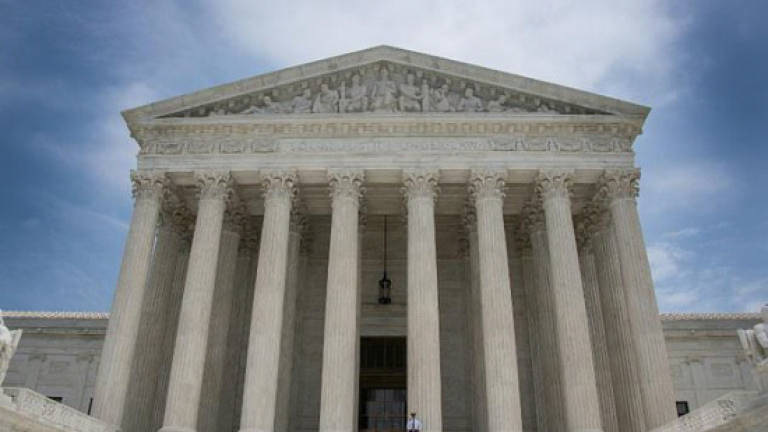Poor legal defence the spotlight in death penalty case before the US Supreme Court

WASHINGTON: The US Supreme Court hears arguments Monday in a death penalty case that focuses on a key inequity in the US legal system: the fairness of condemning to death someone who has had a poor legal defence.
The death penalty in the US is imposed "not for the worst crime, but for the worst lawyer," says Stephen Bright, president and senior counsel at the Southern Center for Human Rights.
The Supreme Court's nine justices will weigh the implications of a poor defence as they address the sentencing of Carlos Ayestas – a man of Honduran origin condemned to death for, along with two accomplices, tying up a 67-year-old woman and beating her to death after they broke into her home in 1995.
According to the defence, there were several mitigating factors – Ayestas was an alcoholic before adolescence, an addict, and had suffered brain trauma and severe mental health problems.
He was tried in Harris County, Texas, which encompasses the city of Houston and where more people have been sentenced to death than anywhere else in the United States. It is the third time a case from the county has arrived before the Supreme Court this year.
"That tells you that there is a problem," said Robert Dunham, Executive Director of the Death Penalty Information Center.
"When you have three outlier practices in one jurisdiction in one year, it begins to look like a renegade county as opposed to just an outlier county."
Lack of expertise
The American penal code stipulates a defendant has the right to counsel and "reasonable necessary" means for his or her defense – in particular to fund investigations likely to establish mitigating circumstances.
But in the case of Ayestas, the "trial counsel didn't do anything for almost a year and a half, until about a month before trial," according to Lee Kovarksy, who is arguing the case before the Supreme Court.
"A reasonable lawyer is supposed to look into this person's social history, get a mental health profile and figure out what the most effective mitigation case will be. None of that happens here."
Once Ayestas' guilt was established, he added, it should have been asked whether someone like him belongs "in the category of the worst of the worst."
"Do they deserve the death penalty in light of the circumstances in which they lived their life?" Kovarsky said.
His view was echoed by Brandon Garett, professor at the University of Virginia School of Law.
"The main job of a defence lawyer in a death penalty case is to give the jury a reason not to sentence someone to death," he said.
No reason not to sentence
For Ayestas, he added, it was "no surprise that the jury took 12 minutes to decide whether to sentence him to death."
"They had no reason to consider not to sentence him to death."
In order to challenge a person's detention following poor legal defence in the United States, a petition for habeas corpus can be filed – arguing the person was detained against their constitutional rights.
But in Texas, the law complicates things for prisoners – requiring lawyers to prove the sentence would have been different if the defendant had been better represented.
"You need a team to do capital defence. A lawyer alone is not enough," says Emily Olson-Gault – director and chief counsel at the American Bar Association's Death Penalty Representation Project.
Such a team should include social workers, as well as investigators and funding for medical experts – all of which were denied to Ayestas by the state of Texas.
These lawyers hope the Supreme Court will back the defense's argument that Ayestas was denied "reasonable necessary" means to investigate possible mitigating evidence.
Juries in the past have been receptive to arguments related to mental health, even when faced with the most barbaric crimes.
In the case of James Holmes – who opened fire in a Colorado movie theater 2012, killing 12 and wounding 70 – evidence of dementia persuaded a jury to forego the the death penalty. — AFP